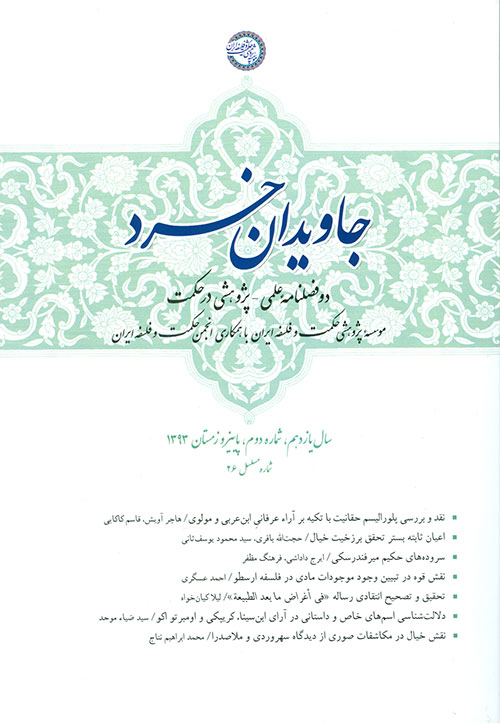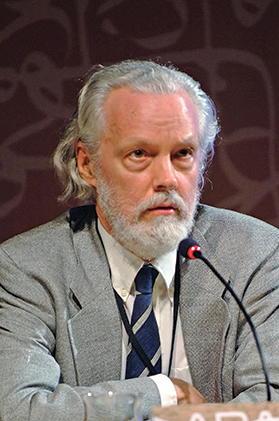Sufi Mystics and Philosophers of Illumination on the Naturalistic Approach to the Ancient Greek Philosophers
Keywords:
phusis, Phenomenon, naturalistic approach, Ancient Greek philosophers, Muslim sufi mystics and philosophersAbstract
Following Aristotle, some philosophers mainly Peripatetic such as Avicenna hold that Ancient Greek philosophers are physicist. In his al-Shifa, Avicenna calls them tabi'iyyun (physicist), in contrast to other group whom he with respect refers to as ila'hiyyun namely metaphysicians. According to this approach, the project of separating physics from metaphysics was set up in Aristotle's philosophy; thus, the idea of pre-Socratic philosophers that a single element – such as water for Thales or fire for Heraclitus- as the prime matter or the origin of all things was misunderstood and made them belittled. In contrast to this group of philosophers, Muslim mystics and philosophers of Illumination adopted another view closer to that of Ancient Greek philosophers. Their attitude towards nature as manifested existence paraphrased in Ancient Greek as "aletheia" and towards natural things as different manifestations of that truth greatly corresponds to what Greek philosophers meant by "phusis". So is Suhrawardi's view who regards the language of Ancient Greek philosophers symbolic and thus Aristotle and Avicenna unable to understand that language.The concept of manifestation or appearance (Zuhūr)) is the keyword to understand Greek understanding of phusis (Being). As Parmenides specified, "Being exists, and none-being does not", thus Being is one and necessary and impossible not to exist; and all things (phenomena) are its manifestations.In Islamic mysticism, the ontological foundation is "appearance" or manifestation. In his al-Asfar, for example, Mulla Sadra says: Being is one single reality characterized by "being apparent (uncovered) in all forms of appearance and it makes other things apparent. Being is concomitant with appearance. "Were it not apparent for itself and by itself in different things but apparent through something else, it would not be there at all, rather it would still remain under the veil of nothingness and darkness of hiddenness". The same relation between Being (phusis) to truth (aletheia) to the ancient Greek philosophers is between Being and Truth in Islamic mysticism. Al-Qaisari begins his Comments on Fusus al-Hikam with "On Being and that It Is the Truth"; Being is concomitant with Truth(al-haqq), thus it is one and every constituent of multiplicity is a state of it. Every exiting thing is a manifestation of the Truth. The Arabic term mazhar stems from the root zahara which means to appear, thus mazhar means a place where the Truth appears or manifests Himself; this is the precise equivalent of "phenomenon" in Greek language. In fact, what Muslim Sufi mystics say about the Truth Almighty Who manifested Himself in the world of Beings is their understanding and interpretation of the doctrine of creation in the Qur'an. In their view, "God created means that God manifested Himself". Each existing thing is a place where God has appeared and it shows Him somehow. As Jami has said, "It is Being that appears in all things".Nonetheless, Muslim mystic argue, this so-called theory of similitude (tashbih) does not imply the negation of God's incomparability (absolute transcendence or tanzih), because He is far cry from all other than Himself. As per the sufi philosophy rule "The absolutely simple entity is everything, yet it is far cry from everything". Muslim mystics, like mutakalemin, hold that God Almighty is far cry from His creature (the theory of incomparability), but contrary to them and at the same time, they hold that He manifests Himself in all existing things (the doctrine of similitude). Divinity of natural beings, in Ancient Greek thought, somehow denotes the theory of similitude as understood in sufi mystical context. Thales, as reported by Aristotle, "held that the origin of all things was water" while he was used to say that "all things are filled with gods" is an evidence for such divinity theory. In Greek tales, as reported by Homer and Hesiod, natural beings are gods having divine affairs -for example, Gea is the natural earth and at the same time the name of one god i.e. god of earth, or Oceanus is both natural ocean and god of oceans. This issue symbolizes the doctrine of similitude in mysticism yet it is not to be taken by mistake as the "theory of pantheism". This is because Ancient Greek thinkers adopted an attitude of similitude which means the appearance of the Divine in the world, and at the same time they believed in His absolute incomparability, too. Gradually, their belief of similitude was overshadowed by rival theory and transformed or lost its meaning. The separation of logos from mutus and, from another side, physics from metaphysics are the other aspects of such an event.In fact, in the works of Ancient Greek philosophers such as Parmenides, Heraclitus and more explicitly in all those of Plato in his theory of Forms, there can be seen a consideration of incomparability between God as the Good (agathon) and the beings. That is why Plato treats those myths with respects, but expects Homer as one of the first composer of those poems not to enter his utopia. After the Greek period, in the Christian theology, Logos or the eternal Word adopts the very status and importance of Greek phusis. The theory of manifestation of phusis with the Greek was later substituted by the idea of incarnation of the Father in the Son. As a result, despite many treatises authored under "On The Nature of Things" in the Middle Ages which sometimes are interpreted symbolically considering the nature as God's creature, the world of nature lost its theophanic affair and thus its ontological value in favour of the metaphysical world.In the same way, if we consider the concept of phusis and its relation to Being and Truth in the horizon thought of Ancient Greek philosophers, the opinions of Greek sophists will take on another meaning and facet different from what Aristotle had openly rejected. Here, too, a deep look at and reference to the understanding of the Sufi mystics about the idea of appearance and its relation to the Truth and Being prove that their attitude towards Ancient Greek Sophists is different from the opinions of Aristotelian Peripatetic philosophers who rejected them.

























